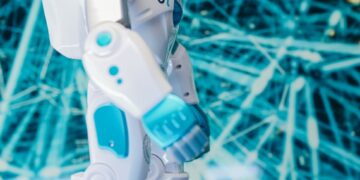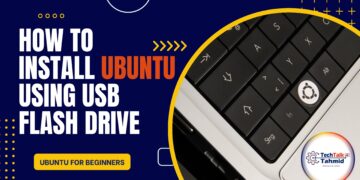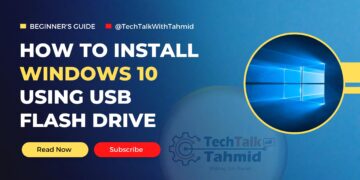A fundamental transformation is underway in personal computing, driven by the emergence of “AI PCs” and powerful on-device intelligence. For years, artificial intelligence primarily resided in the cloud, requiring constant internet connectivity to process complex tasks. Now, with dedicated neural processing units (NPUs) becoming standard, significant AI capabilities are moving directly onto our devices. This pivotal shift promises to redefine not only how we interact with our technology but also reshape the very foundations of our privacy, supercharge our productivity, and fundamentally alter our relationship with the digital tools that permeate our daily lives. This article will delve into these profound implications, exploring the opportunities and challenges presented by this new frontier in personal technology.
The new era of on-device intelligence
The concept of an “AI PC” goes beyond merely running AI-powered applications. It signifies a hardware-level paradigm shift, integrating specialized components like Neural Processing Units (NPUs) directly into the processor architecture. These NPUs are engineered to handle AI workloads with remarkable efficiency, consuming less power and delivering superior performance compared to traditional CPUs or GPUs for specific AI tasks. This integrated intelligence allows for the execution of complex AI models—from real-time language processing and image recognition to predictive analytics—directly on your device, without the constant need to send data to remote servers. This move from cloud-centric AI to edge computing is not just an incremental improvement; it represents a foundational change in how personal computers operate, making them inherently more capable and autonomous in their intelligent functions.
Redefining privacy: Local processing as the new frontier
Perhaps the most significant promise of on-device AI concerns privacy. With AI models running locally, a substantial portion of your sensitive data—voice commands, personal documents, photo libraries, and browsing habits—can be processed directly on your PC without ever leaving the device. This drastically reduces the risk of data breaches during transmission to cloud servers and minimizes the scope for third-party access to your personal information. For instance, an AI assistant that transcribes your speech or summarizes your documents can do so entirely offline, offering a significant layer of security previously unavailable. However, this shift also introduces new privacy considerations. While data may remain local, the AI itself could potentially create highly detailed profiles of users on the device, raising questions about internal data access by the operating system or applications. Users will need to remain vigilant about permissions and the ultimate control they retain over locally processed data.
The following table illustrates key differences in data handling for various AI paradigms:
| AI Paradigm | Primary Data Location | Privacy Implications | Processing Environment |
|---|---|---|---|
| Traditional Cloud AI | Remote servers | High risk of data in transit interception; server breaches; data aggregation by provider. | Cloud data centers |
| On-Device AI (AI PCs) | Local device | Reduced risk of data in transit; potential for local profiling; user control over device data is paramount. | Dedicated NPU/Local CPU |
| Hybrid AI (Mixed) | Mixed (local & cloud) | Complexity in understanding where data goes; depends on specific task & service design. | Distributed (local & cloud) |
Supercharging productivity: Beyond the cloud
The impact of on-device intelligence on productivity is transformative. Imagine a PC that can instantly generate complex code snippets based on your natural language requests, summarize lengthy reports in seconds, or enhance video calls with real-time eye contact correction and background noise suppression—all without a noticeable lag or internet connection. This real-time, low-latency processing capability liberates users from the constraints of network speed and cloud server availability, making AI-powered tools always accessible and highly responsive. Creative professionals can see immediate results from AI-driven image generation or video editing enhancements, while knowledge workers can leverage intelligent assistants for more efficient research, writing, and organization. The AI PC becomes a hyper-personalized co-pilot, anticipating needs and streamlining workflows in ways that were previously confined to science fiction, ultimately leading to unparalleled efficiency and fostering innovation directly at the user’s fingertips.
A transformed relationship with technology
As AI PCs become the norm, our relationship with personal technology will evolve from one of active command to a more symbiotic partnership. Our devices will become less like inert tools and more like proactive, intelligent companions. They will learn our habits, preferences, and working styles, offering predictive assistance and personalized experiences that adapt dynamically. For instance, an AI PC might automatically optimize power settings based on your current task, suggest relevant files for a project you’re starting, or even proactively secure your device against emerging threats by analyzing local network traffic patterns. This deeper integration of intelligence means technology will seamlessly fade into the background, operating more intuitively and requiring less conscious effort to achieve desired outcomes. Users will experience a more fluid and less friction-filled interaction, freeing up cognitive load and allowing for greater focus on creative and strategic thinking, fostering a truly personalized and empowering digital environment.
The advent of AI PCs and powerful on-device intelligence marks a pivotal moment in the evolution of personal technology. This shift profoundly redefines our understanding of privacy by moving data processing closer to the user, though vigilance about local data management remains crucial. Simultaneously, it ushers in an era of unprecedented productivity, enabling seamless, real-time AI assistance that is no longer bottlenecked by cloud connectivity. Our relationship with technology will transform, becoming more intuitive, proactive, and deeply personalized, empowering users with capabilities previously unimaginable on a personal device. Embracing this new landscape requires a thoughtful approach, balancing the immense opportunities for efficiency and innovation with a renewed focus on data governance and digital literacy. As these intelligent machines become extensions of our own capabilities, navigating the future will depend on our ability to harness their power responsibly and creatively.



















